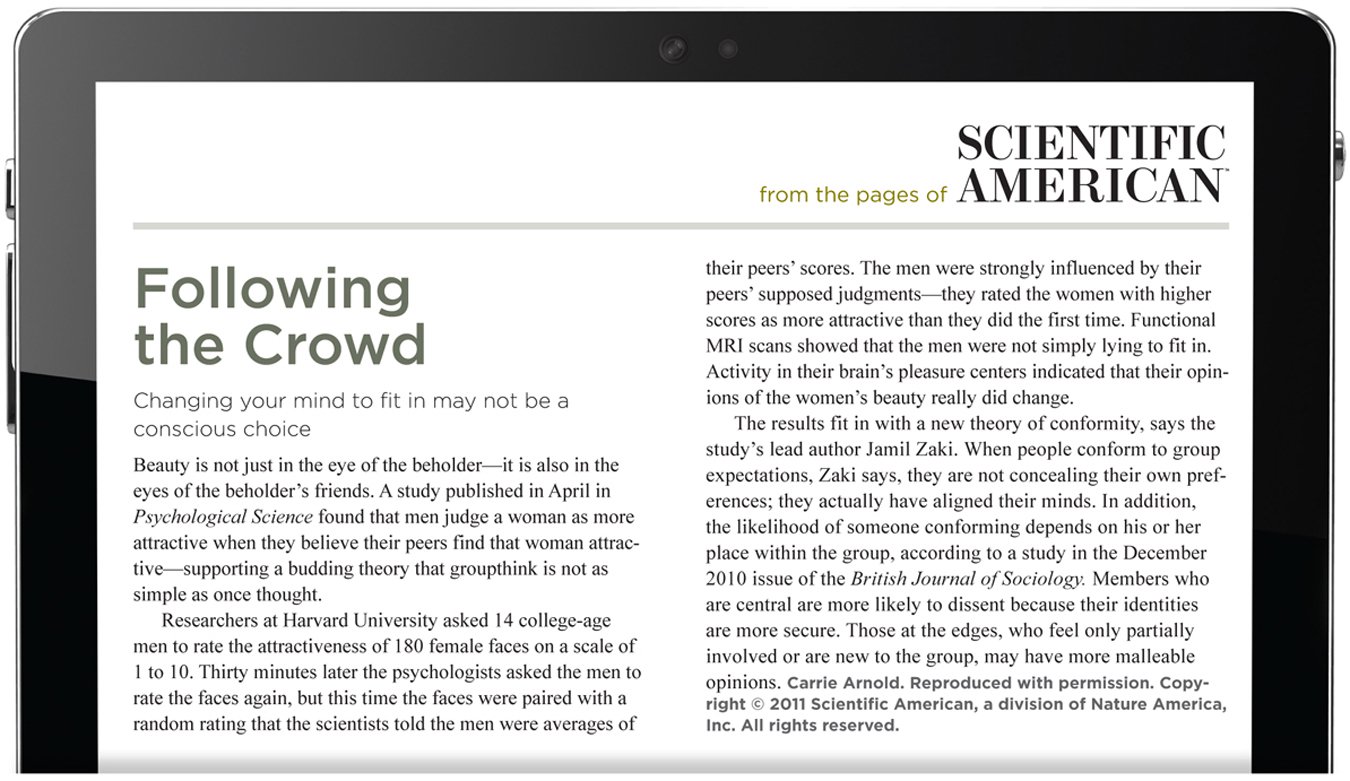Chapter 1. Chapter
Article
From the Pages of Scientific American
Following the Crowd

Click the image to enlarge. Click "Next" to continue.
1.1 Quiz
1. Zaki and colleagues demonstrated that when people were made aware of peer ratings of attractiveness, individual participants’ altered their ratings such that their judgments of attractiveness came closer to the group rating. This is an example of which type of social influence?
| A. |
| B. |
| C. |
| D. |
2. Why were Zaki and colleagues so convinced that people were in fact changing their beliefs in the level of the women’s attractiveness as opposed to lying in order to fit in?
| A. |
| B. |
| C. |
| D. |
3. The excerpt also discussed other research that found a factor that affected the level of conformity to groups. This factor was:
| A. |
| B. |
| C. |
| D. |
4. It’s possible men might not really know how to accurately evaluate a woman’s attractiveness. When faced with a (supposed) normative evaluation, men may change their initial evaluations out of this desire to be accurate in their judgments. This reflects what idea about why people conform?
| A. |
| B. |
| C. |
| D. |
5. Imagine that, instead of presenting participants with the supposed average rating of their peers, participants were asked to change their judgment of attractiveness to a higher or lower number as a favor to the experimenter. In this case, we are not talking about conformity any longer, but about:
| A. |
| B. |
| C. |
| D. |